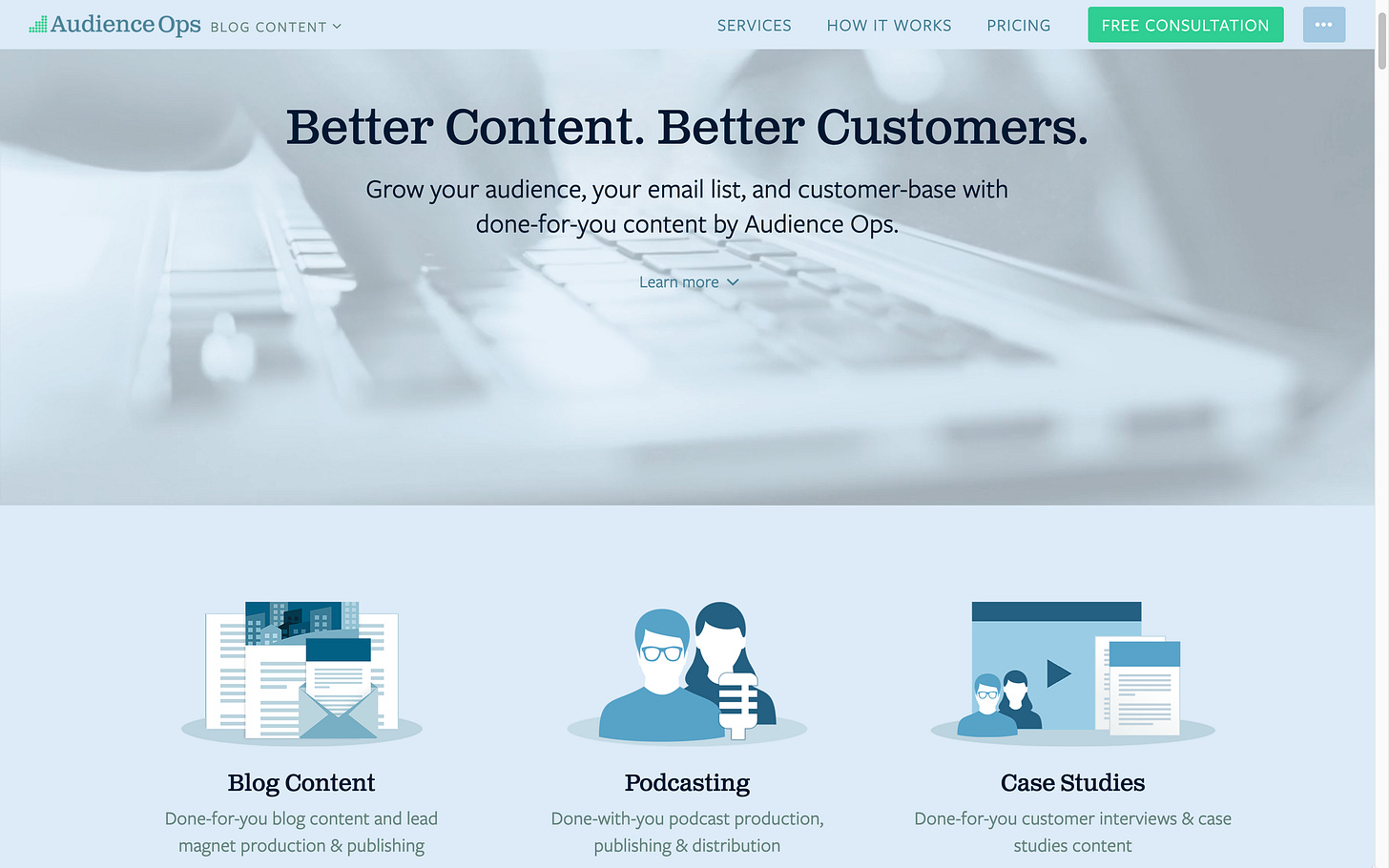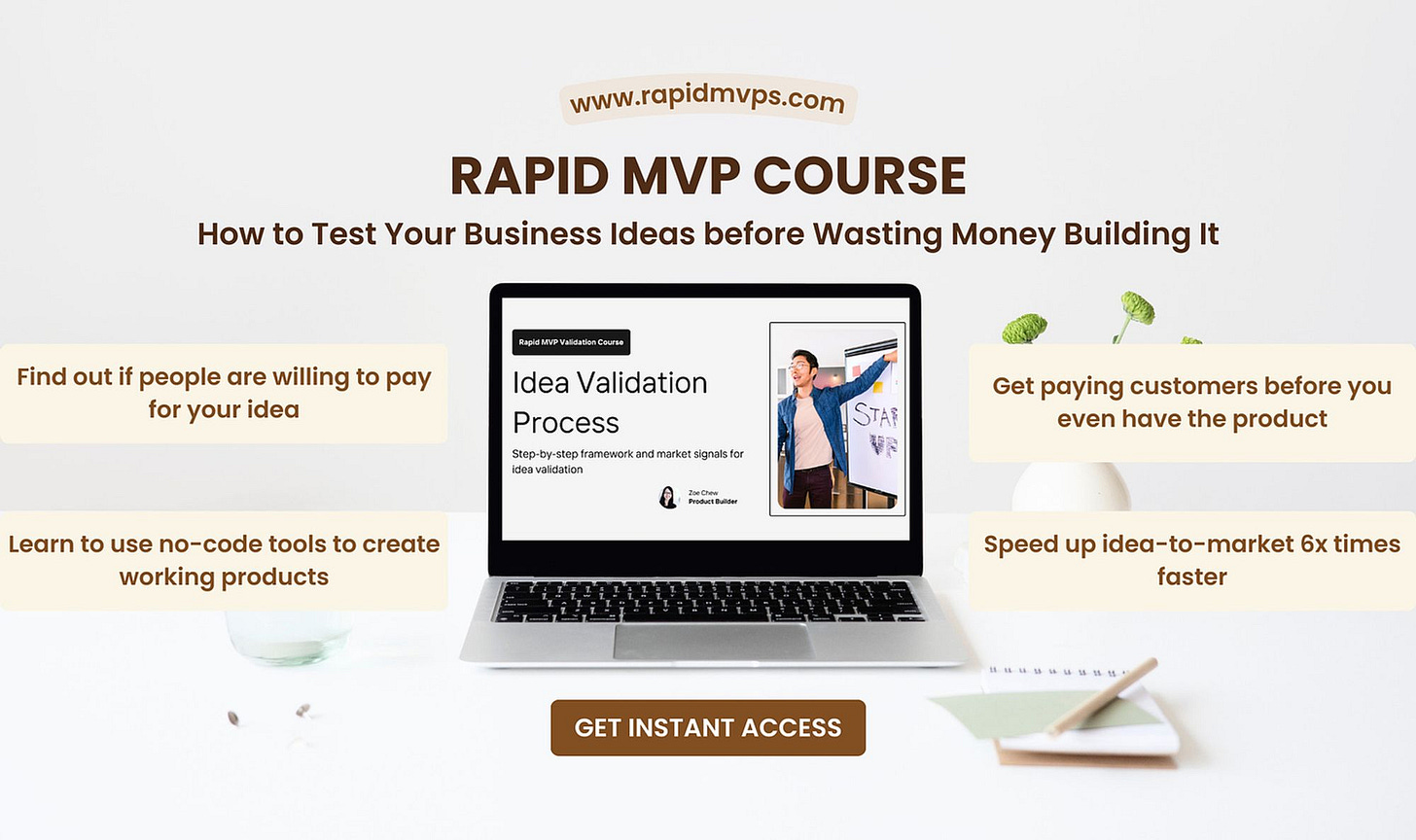No-code Prototypes to Validate Ideas & Get Paying Customers $
How to quickly (cheaply) test new ideas to see if they will work?
In this post, we will dive into:
How to quickly (cheaply) test your startup ideas 🚀
Why you CAN’T validate an idea 😱
How to set up a prototype 🙋♀️
Different ways to prototype 🛠
Create mechanisms that can get paying customers 💰
Metrics to measure idea validation ⏰
No-code tools to build a prototype 🧰
#1 Test your startup ideas
Starting something new is always risky and uncertain. You don’t want to spend thousands of dollars or months of coding only to find out your startup idea doesn’t work..
So you want to quickly (and cheaply):
test the concept
create a prototype
validate the demand
get feedback
collect evidence that your idea has potential (or kill the idea if it doesn’t)
all before investing resources to build the in-depth features and solutions
TBH: you CAN’T validate an idea
There are many misconceptions when it comes to “validation”.
Jason Fried, CEO at Basecamp explained why you can’t validate an idea in this video:
“You can’t validate an idea, the idea doesn’t exist. You have to build the thing. You have to make the thing.
The “market” will tell you if it’s any good or not. Until you do that, you have NO IDEA.
You can’t validate anything by asking people about your idea…
The only way to know if you’re on the right track is to build the thing, put it out there and see what happens.”


#2 How to build a prototype?
“Build the thing, put it out there, and see what happens.” —Jason Fried
You need to have “something” to show. And it doesn’t have to be a fully functional or feature-rich app. This is why we call it a prototype. It is designed to test, collect feedback, measure, learn and iterate.
In other words, it’s designed to find EVIDENCE of whether your ideas are worth pursuing.
The best evidence is: Did people PAY for it? Second best evidence: Did people USE it? (if payment is not an ideal measure for validation, e.g. if you’re testing social media app ideas).
There are multiple ways to prototype your ideas. Today, I will break down these options based on:
types of prototype
how to set up the experiment
how to deliver the value to users
metrics to measure
no-code tools to build the prototype
suitability of prototype
(1) Concierge service
Also known as concierge MVP. You manually help your users accomplish their goals by “imitating” the user interactions as if they are being done on the software, online platform, or automation.
Prototype
Today, Airbnb is a full-fledged platform with in-depth functionalities. But they didn’t start from there.
Airbnb was started as a concierge service. The founders rented out 3 of their air mattresses to offer accommodation alternatives in San Francisco for an upcoming design conference.
The setup
The team made a simple site to announce the offer. But the site didn't have any filtering, booking, and customer payment features at the beginning.
Deliver value to users
If people were interested in the mattresses-as-service, they could contact the founders and proceed with the payment face-to-face.
Validation
Two men and one woman showed up, paid $80 each for the air mattress. The team validated that people are willing to pay for alternatives to hotels (strangers’ homes).
Suitable for
Concierge service can be used for testing marketplaces idea where the interaction between the supply-side and demand-side users can be fulfilled through manual delivery of the service without any automation.
Other startup idea examples that can utilize concierge service prototype: online grocery delivery, freelancer matchmaking, online booking platform.
No-code tools for concierge prototype:
1. Umso or Carrd to create the website and value proposition
2. Calendly or SimplyBook for online scheduling or connecting with the users for further communication
(2) Online form
You can start validating with pre-orders for your physical (or even digital products) without creating an eCommerce website by using an online form.
Prototype
Imagine you’re testing an online store that sells beauty products.
Problem: It’s hard to find natural handmade beauty products and health-conscious consumers are looking for chemical-free alternatives.
Solution: Online shop that curates natural handmade body scrub, moisturizer, soap, lip balm, lotion.
The setup
Create an online form to showcase your product concept and a list of product catalogs, item names, images, descriptions, and prices for potential customers to pre-order. Limit choices at the beginning and focus on unique offerings.
Deliver value to users
Integrate the online form with payment tools to allow customers to pre-order the products. You also want to include customer details such as their name, email, phone, shipping addresses, etc.
Validation
Number of traffic, conversion rate %, and pre-order revenue $.
It’s possible that you don’t need to stock the inventory upfront— until you have validated with paying customers, you can fulfill their orders afterward.
If you found out there’s no demand for the product idea, you can always refund the pre-orders to your customers. All without heavy investment in building an eCommerce store to test your concept.
Suitable for
An online form can also be used for testing other startup ideas, for example:
A paid online fitness class for a niche market—you can create a form that integrates with online payment to test how many people are paying to attend a Zoom fitness class.
A paid job board—create an online form to test if people would be interested to list their jobs by asking companies to submit their vacancies. If you have an audience (a large amount of website traffic or email list), test if they will pay X amount per month to list their job posting.
No-code tools for online form prototype:
1. Typeform to create interactive online forms with built-in templates such as this one for online orders. Other online form tools: Google Form, Airtable Form, JotForm.
2. Stripe: If you’re using Typeform, you can integrate with Stripe for customer payment within the online form.
#3 Productization
Productization is when you package your freelance services into a marketable offer where clients can pay upfront fees (one-time or recurring) to get their digital report, strategy plan, or maintenance services delivered.
Using the same approach, you can turn your app idea into a “done-for-you” service that imitates the workflow, functionalities, and characteristics of the actual app.
Prototype
Imagine you’re testing a SaaS app idea that ranks the most trending blog posts and auto-generates a list of top-ranking SEO keywords that are associated with these top blog posts to optimize content marketing strategy.
The setup
Come out with a landing page that contains the offer:
I’ll help you curate the most trending blog posts in your industry, analyze 50 top-ranking SEO keywords and 20 SEO-optimized blog post titles you can use to rank your next content piece on Google.
Get your content strategy report for only $39. We will deliver within 24 hours.
Deliver value to users
If potential clients are interested, they can pre-order the digital report in PDF format.
Validation
Landing page conversion rates %, number of paying customers who order the digital report.
Take one step further by understanding your customers: how useful are the details in the digital reports, what can be improved, etc.
Once you have collected these data points, you will have a better sense of direction on how to approach this idea and iterate the prototype further.
Suitable for
Testing SaaS app idea, database products such as platforms that generate data insights, trends, etc.
No-code tools for productization:
1. Wondershare PDFelement a suite of PDF tools: edit, annotate, convert, create, and secure.
This issue is brought to you by:
No-Code Idea Validation Framework 2024
Working on new product ideas? I’ve combined various tactics, frameworks, and processes to determine whether your product ideas have the potential to be monetized.











